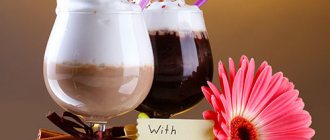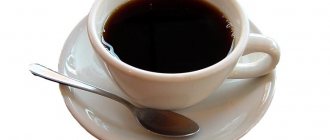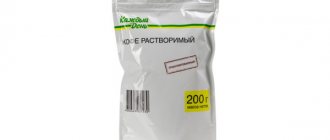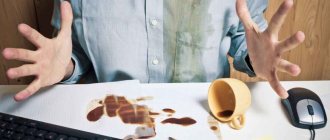Self-medication for migraines
A common mistake is to relieve pain on your own, without a doctor’s prescription, using medications purchased at a pharmacy.
Having trusted the advertising of drugs, people begin to take analgesics 15 days a month or more often. Uncontrolled use of painkillers leads to chronic daily pain, and dependence on the drug is formed, noted in his article, a neurologist at the Moscow State Medical University. Sechenova Natalya Karatygina. An alarming problem arises: the remedy no longer helps, and the person can no longer do without medication.
According to the head of the Headache Treatment Center, Marina Koreshkina, only 25% of patients with migraines consulted a doctor, considering this a frivolous reason to see a doctor.
Scientists from the German, Austrian and Swiss Headache Societies and the German Society of Neuroscience collected the most common recommendations for self-medication of migraine and analyzed them. Doctors have concluded that none of the substances used in self-medication for migraine prevention can be considered effective.
Only 25% of migraine patients consulted a doctor.
Causes
Caffeine is one of the most popular psychoactive substances in the world and is present in many drinks and foods. Caffeine belongs to the methylxanthine class of stimulants that act on the central nervous system. He can:
- speed up metabolism
- increase urine production
- improve digestion
- increases heart rate
- relax smooth muscles
- increase physical performance
- Helps treat certain types of cancer
However, caffeine may cause or contribute to headaches. A study found that 50% of people experience a throbbing, widespread headache during caffeine withdrawal. This is because caffeine has a vasoconstrictor effect, meaning it constricts blood vessels and reduces blood flow. With regular consumption of caffeine, blood vessels become accustomed to constriction. Decreasing caffeine dilates blood vessels. This reaction is important because blood vessels dilate before certain types of headaches occur.
Caffeine also blocks adenosine receptors in the brain, which are pain modulators. Blocking these receptors could potentially reduce the spread of headache pain. People who consume caffeine regularly have more of these adenosine receptors, making them prone to developing headaches when they stop consuming caffeine.
Alcohol for headache relief
Some patients try to get rid of headaches with the help of alcohol, as it can dull the senses and reduce nervous tension. The problem is only getting worse.
Alcohol relaxes the blood vessels, allowing more blood to flow through them. Blood pressure decreases and heart rate increases. As a result, the nerves in the brain stem that connect the brain and spinal cord are stimulated, leading to migraines. Relevant studies were carried out by Dutch scientists from the Leiden University Medical Center. Based on the results of a survey of 2197 patients, it was found that alcoholic beverages became a trigger in 35.6% of survey participants.
Alcohol can seriously complicate your headache problem.
Headache from eating
Complaints about headaches... There are no more frequent complaints in the neurologist's office. And so, the doctor, having prescribed you a bunch of various examinations, talks about following a diet... But which patient will take these advice seriously? But food may well cause frequent headaches.
Scientists even came up with a term - food headache. This pain is most often localized frontotemporally, bilaterally, and throbbing. It develops within about 12 hours after consuming a certain food product or dietary supplement, and even a minimal portion is enough for it to occur.
Tyramine syndrome
It is already known that headache attacks, including migraines, can occur after consuming a variety of foods that contain tyramine. These include cheeses, milk, kefir, sour cream, meat by-products, eggs, some types of fish, certain vegetables and fruits (usually citrus fruits), also white and red wine, beer, chocolate - the full list is quite extensive .
Traditional medicine recipes
There are many traditional medicine recipes on the Internet for the treatment of headaches. Sometimes recommendations border on common sense. It is advised to apply plantain to the forehead and use all kinds of herbal infusions. Absolutely absurd recommendations: relieve pain with a chicken egg mixed with hot milk.
Describes traditional medicine and methods that go against scientifically proven facts: treat with alcohol. Patients are offered to drink a mixture of red wine, horseradish and sugar.
At the same time, there are also effective folk recipes:
- Find points on the edges of the jaw and massage them with your fingers with light pressure.
- A bath with the addition of a decoction of valerian root will help to quickly stop a migraine attack.
- Cool the wet towel in the freezer and apply it to the affected areas of the head at the beginning of an attack.
Adherents of alternative medicine also believe that turpentine helps in treating migraines. It supposedly improves blood circulation and normalizes blood pressure.
The opinion of doctors regarding such methods of treating migraine is skeptical. Yes, it is possible that adequate traditional medicine can be used as an addition to traditional treatment, but it will not replace medical care.
Many doctors and scientists are skeptical about traditional methods of combating headaches.
Causes of severe headaches
Most often, severe pain in the head indicates problems with blood vessels, which:
- shrink too much. The main reasons for excessive compression of blood vessels are oxygen starvation, lack of nutrients (they haven’t eaten or drunk for a long time), weak venous tone;
- expand too much. A disease in which blood vessels regularly dilate excessively is called migraine. This type of neurological disorder affects about 10% of the population.
When looking for a doctor who treats headaches, go to the neuropathology department. In most cases, it is the neurologist who makes the diagnosis and prescribes a treatment regimen. If you have pain in the maxillary sinuses, nose, or ears, make an appointment with an otolaryngologist. Sinusitis, sinusitis, otitis, and other diseases of the ENT organs can also provoke pain throughout the head.
Figure 2 - Migraines can be triggered by a trigger such as a smell or taste.
Features of migraine:
- severe pain is localized in the same part of the head each time;
- before an attack, changes in taste, color, smell, and hallucinations appear (the so-called aura);
- during an attack, a person completely loses working capacity for 2–72 hours;
- pain – throbbing;
- intolerance to sounds, photophobia;
- vomiting, nausea, neurological disorders;
- the presence of a triggering factor (for example, a migraine attack can be triggered by the smell of bananas or the meowing of a cat).
Understanding whether you have a migraine or not is very simple. With migraines, the attacks are clearly expressed, and between them the head does not hurt at all. If your head aches constantly, then it is not a migraine.
Researchers claim that in 90% of cases, painful sensations develop due to overstrain of the muscles of the neck, eyes, face, forehead, and various parts of the head. Pain due to muscle strain and migraine are called primary. You can get rid of them by acting directly on the cause of their occurrence (for example, by performing a neck massage, doing eye exercises, drinking an antispasmodic). The localization of sensations is different. Sometimes it is a girdling headache, in other cases the whole head, or part of it (the back of the head, temples) hurts.
The safest drugs for headaches are Ibuprofen and Paracetamol.
Secondary headaches develop due to pathological processes occurring in the neck or head. They are caused, for example, by osteochondrosis, vegetative-vascular dystonia, and hypertension. Pain can be localized with painkillers. The underlying disease needs to be treated, then the headache will go away on its own.
A severe headache that pills do not help get rid of is a serious reason to visit a doctor. This condition is among the signs of stroke, neurological disorders and requires emergency medical care.
Figure 3 - Severe pain in the head is sometimes provoked by diseases of the ENT organs.
Sometimes very severe headaches develop after taking high-dose headache medications. Such painful sensations are called abuse. Therefore, the principle “the more the better” does not work here.
Sudden severe headache is a sign of a stroke or cranial neuralgia. For patients with diabetes, kidney failure and cancer, this is a signal of the development of metabolic imbalance.
Figure 4 - Severe headache may be a sign of stress or stroke
Painful sensations in the head area can be a side effect when taking medications. If this is the case, coordinate further actions with your doctor.
And painful sensations await people during a hangover. Here's what to do if you have a terrible headache:
- 6 hours after the last drink, take Aspirin (can be replaced with Picamilon, Mexidol, Pantogam);
- take a contrast shower;
- drink a lot of water (this will not be difficult) and any diuretic (Diacarb, Triamten, Veroshpiron). Strong diuretics (for example, Lasix, Furosemide, Hypothiazide, Oxodoline) do not need to be used.
Citramon P or Paracetamol should not be taken. They will overload the liver, which at this moment is already working “at high speed.”
Caffeine is not helpful in treating migraines
Taking caffeine leads to more frequent and worsening attacks. Doctors from Boston University studied this issue. It has been proven that migraine patients should not consume more than three servings of caffeine per day, be it coffee, tea or energy drinks.
Take a migraine test
Questionário ID-Migraine™ eo adequado diagnostico da migrânea
It is important for people with migraine to exclude possible complications and not experiment with their health. Unprofessional actions can aggravate the situation. Visit your doctor on time and stay healthy!
Other caffeine withdrawal symptoms
People who reduce their caffeine intake may also experience:
- anxiety
- irritability
- problems concentrating
- trembling or trembling of the hands
- fatigue and drowsiness
- depressed mood
- increased heart rate
- nausea and vomiting
- high or low blood pressure
- skin hyperemia
- constipation
- flu-like symptoms
- joint and abdominal pain
- muscle stiffness
The severity and number of symptoms a person experiences during caffeine withdrawal depend on how much they typically consume and how quickly they reduce their caffeine intake.
Even people who drink only one small cup of coffee daily for 3 days may experience withdrawal symptoms if they suddenly stop drinking coffee.
According to one study, most people experience withdrawal symptoms within 12-24 hours when cutting back on caffeine intake and experience the most severe symptoms within about 20-51 hours. Caffeine withdrawal symptoms can last from 2-9 days.
People often describe caffeine withdrawal headaches as a widespread, throbbing headache.
Researchers define caffeine withdrawal headache as a headache that:
- develops within 24 hours of the last caffeine use in people who consume at least 200 milligrams (mg) of caffeine per day for more than 2 weeks
- pain goes away within 7 days after stopping caffeine
- the condition improves within 1 hour after drinking 100 mg of caffeine
Why is it difficult to give up sweets?
When refined sugar is consumed, the brain produces serotonin and dopamine - pleasure hormones. It is addictive like a narcotic drug. Refusing it can cause discomfort:
- irritability, depression, anxiety;
- decreased performance, rapid fatigue during physical and intellectual work;
- headache;
- insomnia;
- muscle pain;
- violation of the diet - at the usual time of breakfast, lunch, dinner, appetite disappears, but at inopportune times there is a strong desire to eat something sweet.
If you show willpower and give up sweets, the negative consequences of refusal will disappear in 2-3 weeks: sleep and appetite will improve, you will feel lightness and a surge of energy, your well-being and mood will improve.
Neurologist recommends six home remedies that can relieve headaches and migraines
Eat regularly and stay hydrated Skipping meals can be a trigger for the onset of a migraine. Low blood glucose levels caused by not eating can also cause tension headaches.
Dehydration, even the slightest, can also trigger a migraine or headache, so always keep water on hand, especially if you exercise.
For some, certain foods or drinks may be a headache trigger. Most often, these are monosodium glutamate, coffee and alcohol. Doctors recommend keeping a food diary to identify food triggers for headaches.
Omega-3 polyunsaturated fatty acids can reduce headaches Omega-3s are essential to your body, but they are not synthesized in the human body and must be obtained from food. There are many of them in salmon, mackerel, herring, flax seeds and oil. Research suggests that eating more foods high in omega-3s can benefit migraine sufferers by significantly reducing the duration of an attack.
Eat more foods containing magnesium Magnesium reduces the frequency and intensity of migraine attacks, says Nada Hindiye, MD, a headache specialist in California. Magnesium is found in bananas, flax and chia seeds, pumpkin, cashew nuts, and spinach.
Acupressure and scalp massage relieve pain Acupressure is used in traditional Chinese medicine and can reduce tension in the neck muscles and relieve headaches. Common massage points for relieving headaches are Feng Chi (at the base of the skull, under the occipital bone in the fossa of the outer edge of the trapezius muscle, where a depression is felt), and Zhong Zhu (located in the groove formed by the tendons of the fourth and fifth fingers).
Head massage can also help with headaches, but there are people who are very sensitive to touch during an attack. So the advice to massage your head to relieve tension and promote blood circulation is not for everyone.
A cold compress can help relieve headaches. Both cold and heat can be used to relieve headaches, but according to the publication, most people with migraines prefer cold. You can apply compresses to the forehead, temples or back of the neck.
Essential oils have a calming effect Some people, during headaches and migraines, find the relaxing effect of the smell of lavender oil, diluted peppermint oil or basil. You can lubricate your whiskey with a drop of oil or add oils to a special diffuser .
As an alternative to peppermint oil, you can try drinking peppermint tea made from fresh or dried leaves. It also has a relaxing effect.
Doctors warn that before applying any oil to your body, do a test by applying it to the inside of your wrist to make sure you are not allergic to it.










